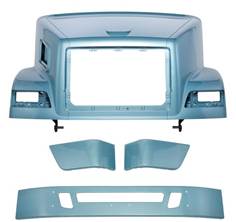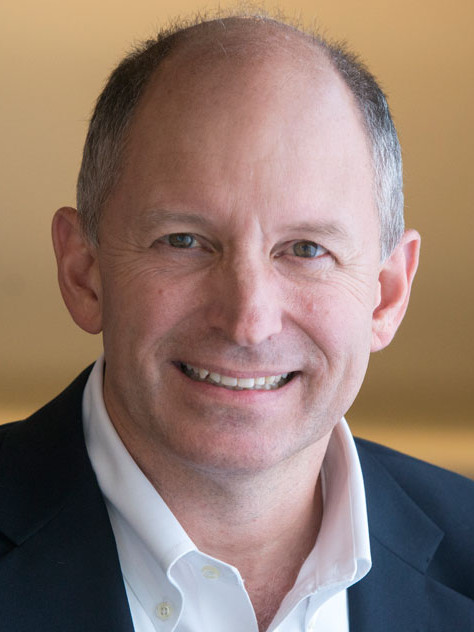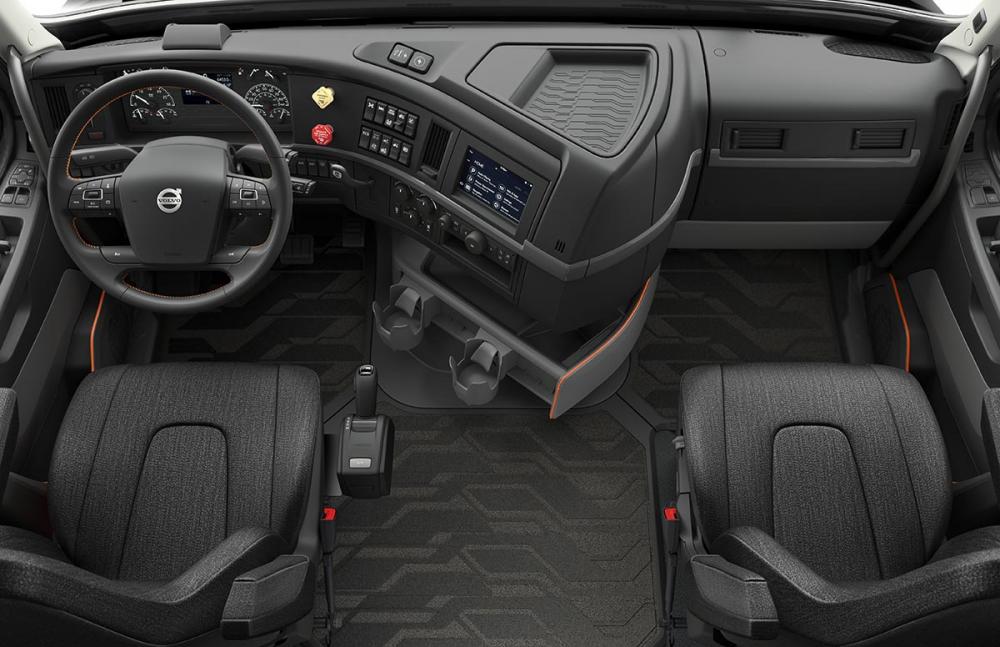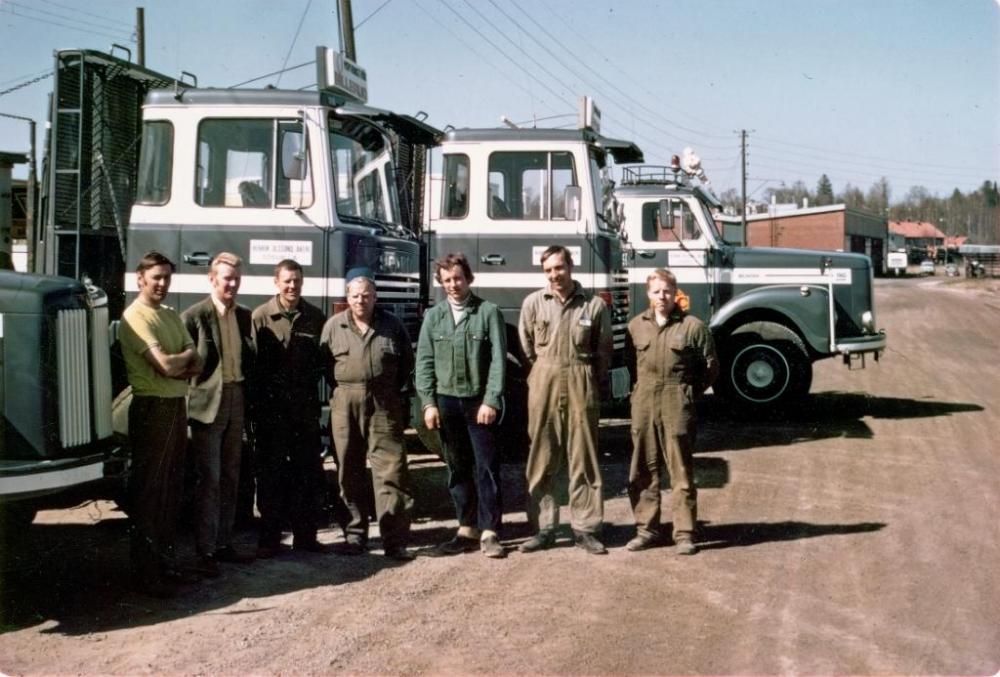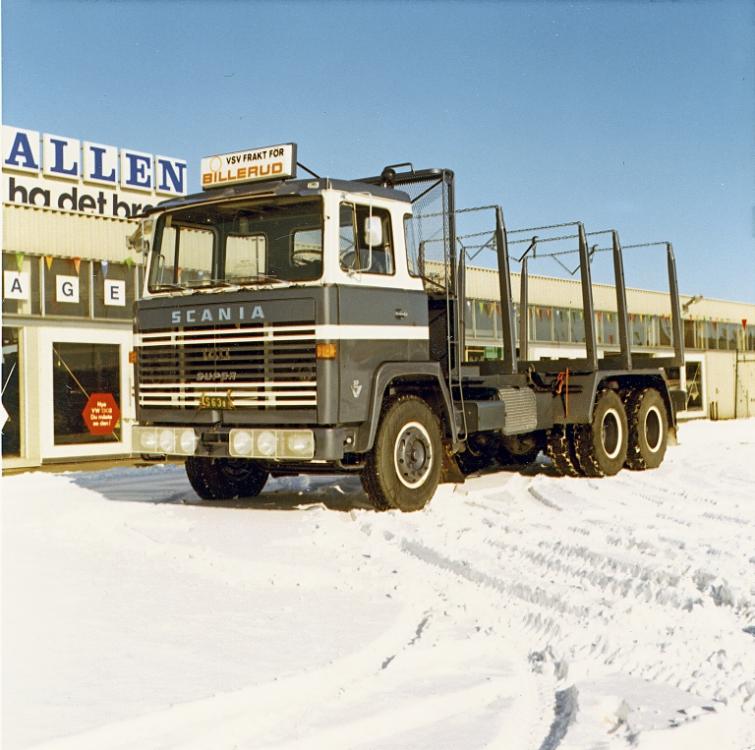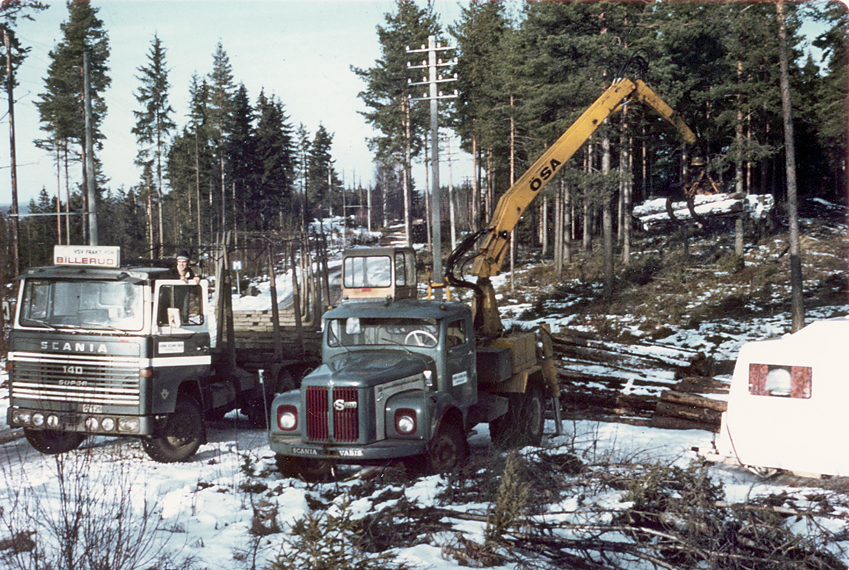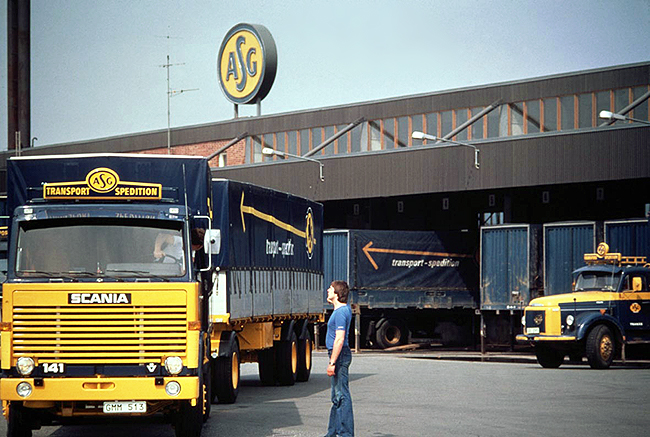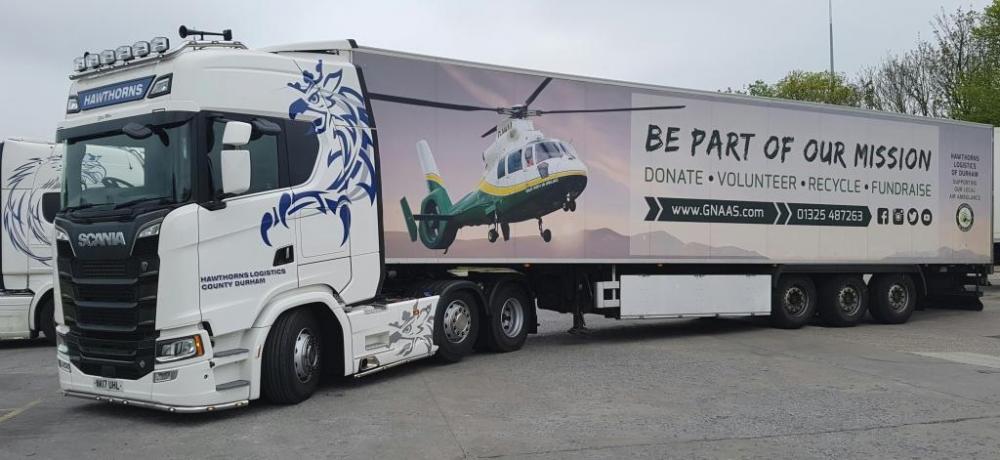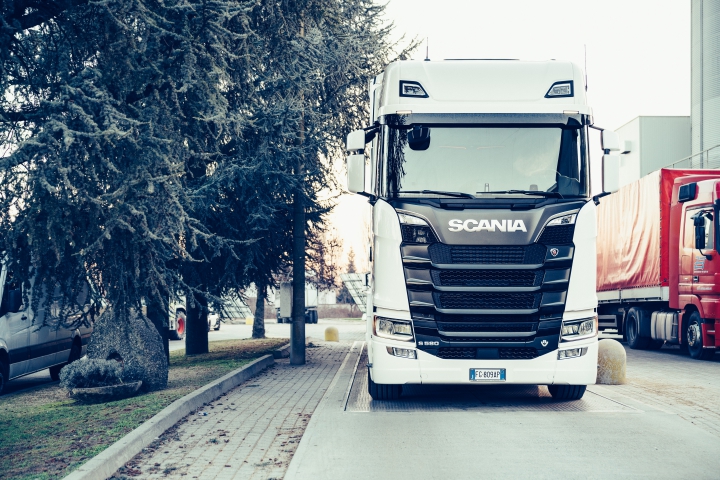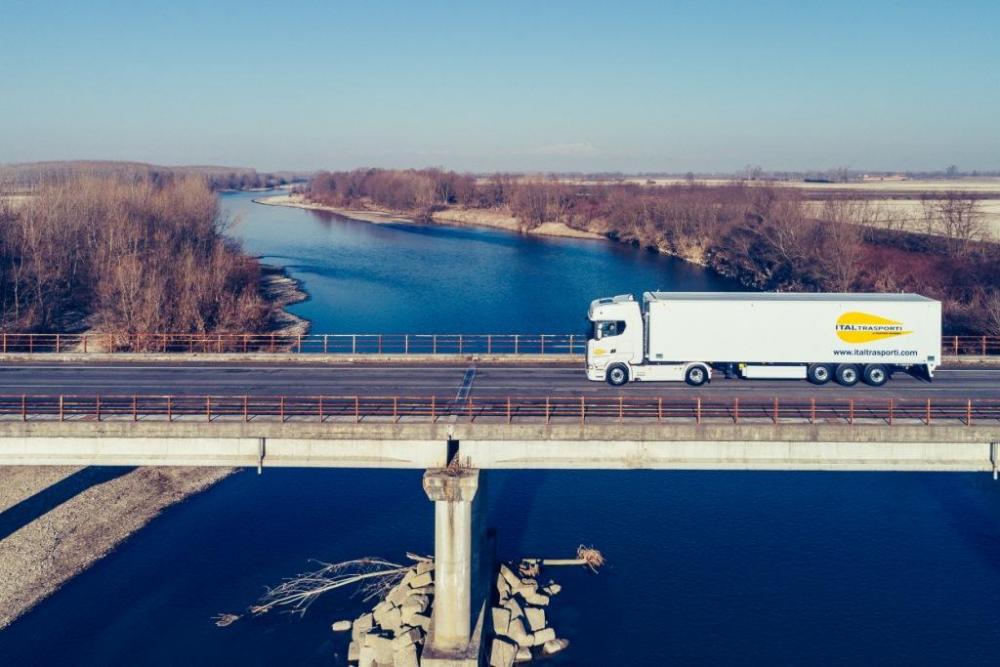
kscarbel2
Moderator-
Posts
18,868 -
Joined
-
Days Won
114
Content Type
Profiles
Forums
Gallery
Events
Blogs
BMT Wiki
Collections
Store
Everything posted by kscarbel2
-
Buda diesel engines ranging from 3.5 to 7.7 litres (212 to 468 cu.in.), were available in Mack trucks, in addition to Cummins, from 1936. During the mid to late 1930s, Buda was a leader in diesel engines and very popular. Mack's first diesel, the 131 horsepower ED519 incorporating the Lanova combustion chamber design, was launched in 1938. Like Buda and others, Mack Trucks had purchased a technology license from Germany’s Lanova AG, led by the German engineer and Lanova concept inventor Franz Lang.
-
In 2004, Meritor and Daimler had signed a MOU. But it doesn’t appear to have endured. Back then, AAC was an axle buyer rather than a producer. -------------------------------------------------------------------------------- TROY, Michigan, (June 10, 2004) — ArvinMeritor announced today that it has signed a memorandum of understanding with Axle Alliance Co. (AAC), a subsidiary of Daimler Chrysler (DCX) headquartered in Detroit, Mich. Under the terms of the proposed long-term agreement, ArvinMeritor would become the turnkey supplier in providing heavy-duty tandem rear drive axles to AAC, ultimately for Freightliner’s North American Class 8 truck assembly operations. Implementation of this memorandum is subject to the execution of a definitive agreement. With this memorandum of understanding, ArvinMeritor will partner with AAC on the design, development and assembly of heavy-duty axles from ArvinMeritor facilities in York, S.C., Monterrey, Mexico, and Asheville, N.C. ArvinMeritor and AAC have had a cooperative working relationship for more than five years, together bridging the gap between American and European axle technologies. ArvinMeritor and AAC will continue to work together in a partnership to successfully support the DaimlerChrysler worldwide truck axle platform strategy. “ArvinMeritor will continue to produce its own axle designs for Freightliner, and under this announced memorandum of understanding, we will become the turnkey supplier of a new line of proprietary AAC tandem axles,” said Tom Gosnell, president of ArvinMeritor’s Commercial Vehicle Systems business group. “This incremental relationship for ArvinMeritor has opened the door for growth in our axle component supply business around the world. We’re geared up to become a much larger player, and welcome the opportunity to demonstrate our global competitiveness to DCX.” Christof Traidl, president and CEO of Axle Alliance Company, said, “Axle Alliance Company -- by partnering with ArvinMeritor -- is securing a competitive launch of our product. Using ArvinMeritor’s existing resources, we will avoid redundant asset implementation and merge best practice methods from the two major axle players in the world.” Rainer Schmueckle, Freightliner LLC President and CEO, said, “Freightliner is pleased to incorporate the new DaimlerChrysler proprietary axles which are available exclusively to customers of our truck, bus and chassis brands. Across the company’s brands and product lines, we offer a range of proprietary components including Mercedes-Benz medium- and heavy-duty engines and Mercedes-Benz manual and automated transmissions. Now the introduction of these new proprietary axles will provide exclusive performance benefits and value to our customers.” Axle Alliance Company, headquartered in Detroit, Mich., is a wholly owned subsidiary of DaimlerChrysler supplying front and medium-duty rear axles to Freightliner, Freightliner Custom Chassis, Thomas Built Bus, Sterling and Western Star. Bridging American and European technology, AAC is developing, producing and supplying innovative systems for the commercial truck market. AAC also provides consulting capabilities for automotive industries. https://www.meritor.com/ourcompany/news/Lists/News/DispForm.aspx?ID=1180&RootFolder=%2Fourcompany%2Fnews%2FLists%2FNews%2F2004
-
FMCSA Proposes Split Sleeper Berth Pilot Program
kscarbel2 replied to kscarbel2's topic in Trucking News
DOT announces pilot program to study split sleeper berth flexibility in hours of service regs James Jaillet, Commercial Carrier Journal (CCJ) / June 5, 2017 Following incremental steps toward such a study in recent years, the Federal Motor Carrier Safety Administration will formally announce Tuesday a pilot program intended to gauge the feasibility and safety aspects of adding split sleeper berth options to hours of service regulations. FMCSA says it seeks at least 200 drivers to participate in the study. Drivers will be studied for up to 90 days, per a Federal Register entry slated for publication June 6. Current regulations allow drivers, as an alternative to a straight 10-hour off-duty period, to take an eight-hour sleeper berth period to break up their 14-hour on-duty limit and their 11-hour drive-time limit. Drivers using this provision must take a two-hour off-duty period after exhausting their 11-hour drive-time limit. The two-hour off-duty period counts against drivers’ 14-hour limit for the on-duty period broken up by the two-hour break. The agency’s split sleeper berth pilot program seeks to determine the effects other split sleeper berth options, such as 5-5, 6-4 and 7-3, would have on drivers and their ability to operate. The study’s outcome could dictate whether FMCSA decides to pursue reforms to hours of service regulations pertaining to split sleeper berth flexibility. FMCSA said last year it had partnered with Virginia Tech’s Transportation Institute and Washington State University to conduct the split sleeper berth pilot program. Researchers will study the 200 (or more) drivers in their normal operations. However, drivers will be free to split their sleeper berth time into two segments of “any combination..totaling 10 hours.” “Drivers would be able to use split or consolidated sleep schedules as they choose,” the agency says, “but they still must meet the daily minimum rest requirements.” The study seeks to data from ELDs, monitoring systems like video recorders, roadside inspections, wrist actigraphy (studying total sleep time and wakefulness), psychomotor vigilance tests taken in cab, subjective sleepiness ratings as noted by drivers and sleep logs. Researchers will then study the data and make conclusions regarding the positive or negative outcomes of drivers using split sleeper berth options. FMCSA is soliciting carriers and drivers to participate. Those interested in participating should visit sleeperberthstudy.com to complete an application, take a questionnaire and provide written consent to be studied. The agency has not said how long the data collection phase will last in sum, only saying individual drivers will be studied for up to 90 days. It also did not say how long it would take to produce conclusions based on the data gathered. Public comments about the study are being accepted for 60 days, giving carriers and drivers the chance to provide the agency with input about the study and how it should proceed. The comment period opens Tuesday and will be available at the regulations.gov rulemaking portal via Docket No. FMCSA-2016-0260. -
Heavy Duty Trucking / June 5, 2017 Hoping to develop “statistically reliable evidence” on whether split-sleeper-berth time affects driver safety performance and fatigue, the Federal Motor Carrier Safety Administration is proposing a pilot program that would give a limited number of CDL holders temporary relief from the existing sleeper-berth regulation of the hours of service rule. During the pilot program, participating truckers who regularly use a sleeper berth to accumulate their required 10 hours of non-duty work status would have the option to split their sleeper berth time within parameters specified by FMCSA. The agency said that driver metrics would be collected for the duration of the study and that participants’ safety performance and fatigue levels would be analyzed. Official notice of the proposal is slated to be published on June 6. FMCSA pointed out that currently any interstate driver who operates a property-carrying vehicle equipped with a sleeper berth and who uses the sleeper berth provision must take at least eight consecutive hours in the sleeper berth, plus a separate two consecutive hours either in the sleeper berth, off duty, or any combination of the two, before returning to on-duty status. By contrast, the pilot program would give participating drivers a temporary exemption from this requirement for consolidated sleeper berth time. The agency said that for study purposes, drivers would be allowed to split their sleep into no more than two sleeper berth segments. “Current regulations allow drivers to use one 10-hour period, or splits of nine and one hours or eight and two hours,” said FMCSA. “Drivers operating under the exemption for this study would be allowed to use any combination of split sleeper periods, totaling 10 hours, with neither period being less than three hours , allowing for the driver to use splits of three and seven hours, four and six hours, or two five-hour periods. Following study enrollment, drivers would be able to use split or consolidated sleep schedules as they choose (within study parameters), but they must still meet the daily minimum rest requirements.” FMCSA will be seeking public comment on the pilot proposal, including but not limited to these and other questions: Are any additional safeguards needed to ensure that the pilot program provides a level of safety equivalent to that without the consolidated sleeper berth time exemption? Are the data collection efforts proposed for carriers and drivers so burdensome as to discourage participation? How should data collection efforts differ for team drivers? The complete proposal can be accessed here. Comments may be submitted online to teh agnecy under Docket No. FMCSA-2016-0260 by clicking here.
-
Truck News / June 5, 2017 DUBLIN, Va. – Volvo Trucks North America wants your truck on the road and to look like it’s straight off the assembly line, even after replacing a body part. Volvo’s Genuine Painted Parts Program offers more than three dozen parts, including hoods and bumpers for its VNL and NNM model trucks painted with the same custom formula and high-quality Imron paint used at Volvo Trucks’ new River Valley facility in Dublin, Va. “Our customers have asked for a solution to reduce their time in the shop as a result of body repairs,” said Michael Leipold, Volvo Trucks parts marketing product manager. “With this program, our dealers can stock or express-order custom-painted pieces for their fleet customers. In some cases, repairs can literally begin on those vehicles as soon as the truck rolls into the shop. That can mean the truck is on the road days earlier than was previously possible.” In addition to painted hoods and bumpers – which Volvo expects orders to complete within 48 hours of request – the program offers bulk part ordering for all models, as well as fully dressed hoods for the VNL, complete with mirrors, headlights, and grille. Full cab and enhanced, semi-groomed daycab options are also available through the program, with a complete line of VNL and VNM cabs available painted, sealed, and ready for final dressing. “We listened closely to our dealers and customers when developing our catalog of offerings,” Leipold said. “Whether it’s replacing a single piece of the bumper or a complete cab, we believe these factory quality parts can save fleets time and money.” .
-
The Oregonian (Portland, Oregon) / June 4, 2017 Less than a decade ago, Portland-based Freightliner appeared to have one foot out the door. The storied maker of big-rigs changed its name to Daimler Trucks North America, then announced it would move hundreds of headquarters jobs to North Carolina. In 2013, it changed course and announced plans for a new, $150 million headquarters on Swan Island. And, more recently, it opened a new test track in Madras, moving that function from Indiana. Another change occurred in the C-level suites, with the elevation of Roger Nielsen to chief executive. The longtime Oregonian, who'd been chief operating officer for 16 years, now splits his time between Portland and Charlotte. He spoke with The Oregonian/OregonLive from an office terrace overlooking the Madras test track about Daimler's future in Oregon, autonomous trucks and company culture in light of several discrimination lawsuits. The interview has been edited for length and clarity. Q: Daimler Trucks announced the Madras facility just months after opening its new Portland headquarters. Did those decisions come at the same time? A: One came after the other. We were leasing space throughout North Portland and Northwest Portland. As congestion built up in Portland, you never knew when you had to leave to get to the other side of the river. At the same time, we decided we needed a modern workplace if we were going to become the employer of choice in Portland and in Oregon. We also had distance between the engineers in Portland and the testing group in South Bend, Indiana. If we were going to bring products to market faster, the engineers and the testing group needed to be closer together. If something breaks on a truck in Indiana, it might be two, three, four weeks before you could get out to see it. Here, if something breaks, you're out the next morning to look at it. Q: You're a longtime Daimler Trucks employee. How did you get started? A: I graduated from Oregon State in 1983, and I grew up in Portland. I went to high school in Troutdale, so I've known Freightliner forever. Parents of my friends worked there. When I graduated, I took a job in Los Angeles. I worked for a company that was building laser rangefinders for M-1 tanks and missile guidance systems — things you couldn't talk about with your friends, and if you did, they wouldn't know what you were talking about. After three years, I decided L.A. wasn't a place to raise a family. I'd married in the meantime. I missed Oregon. Freightliner gave me an opportunity to start, so I took a pay cut and moved to Portland. I started off as the lowest-level engineer... Over the years, I got great opportunities to start up new factories, and help buy and sell subsidiaries. I was able to grow up in the company. Q: In 2007, Daimler Trucks started moving employees — including you — to Charlotte. There was a sense in Portland that Daimler was on the way out. What happened? A: There was an initiative to relocate some headquarter functions to Charlotte, and that initiative had a very short life. We decided against finishing it in 2009, though we had already moved about 500 jobs. It came at a time when a lot of the economy was still doing well, before the fall of Lehman Brothers. (The financial services company filed for bankruptcy in September 2008, setting off the global financial crisis.) Afterward, our market dropped out from under us. We fell from a peak of making 800 trucks a day to a low of 120. With such a massive change in our business, it wasn't the time to continue relocating employees. ... We had to decide whether we were going to move to Charlotte or not, and we chose in 2009 to say OK, we're not. Q: Even after that, there was still a sense that Daimler wasn't long for Portland. A: We're committed to Portland. We're committed to becoming the employer of choice in Portland. We're committed to the long-term future of the company based here in Portland, Oregon. Q: What about the future of manufacturing on Swan Island? A: The Portland plant has been assembling trucks since 1947. Great workforce. Today, we're working on nearly one full shift. For the foreseeable future, that's how we'll run it. Q: In 2015, Daimler debuted a self-driving truck in a flashy unveiling atop the Hoover Dam. Where is that technology heading? A: We do not see a point in the near future where there will be driverless trucks on the road. But the technology that will be needed for fully autonomous trucks is the technology needed for today's trucks — everything from active braking to lane control to active cruise control to driver attentiveness monitoring. I look at it like NASA — a lot of their inventions worked their way into daily life. It's the same thing here. Q: Daimler Trucks has been the target of racial and age discrimination lawsuits from employees in both the engineering division and in manufacturing. Does that reflect the culture of the company? A: The legal process went through, and we respect the results of that legal process. But absolutely, the allegations do not reflect the culture of our company, and we don't recognize it. What plaintiffs were saying in those isolated cases did not reflect our experience, my experience, in this company. Culture is always evolving. You can never stop and say, this is the culture I want from now on. There's always room for continuing improvement and there's always room for more empathy. We'll learn and go on. Roger Nielsen Age: 56 Background: Graduated from Columbia High School in Troutdale Education: Bachelor’s degree in industrial engineering from Oregon State, 1983. Résumé: Started with Daimler Trucks North America in 1986; chief operating officer of the company’s manufacturing network since 2001; became CEO in April. .
-
Driver Comfort Guided Volvo VNR Interior Designers Transport Topics / June 2, 2017 WINSTON-SALEM, N.C. — Drivers are proud of their trucks, so many were happy to invite Volvo designers into their cabs when the manufacturer was developing the interior design for its new VNR model, a company representative said. “A lot of this design is intentional and is based on driver interviews and feedback,” Jason Spence, a Volvo product marketing specialist, told Transport Topics during a test drive of a Volvo VNR 300 day cab on June 1. The company met with about 2,000 drivers and fleets while developing the truck, which was unveiled in April. For example, he pointed out the six charging ports — four 12-volt jacks and two USB ports — that come standard in the truck. The two USBs and one 12-volt are mounted on top of the dash, a departure from the traditional spot low in the center stack, and high enough to be near spots where drivers tend to stash devices, he said. This design cue, he added, addresses the issue of charging cables being run up from low-mounted jacks, blocking HVAC and other controls. That said, there are two more 12-volt jacks installed lower down, near storage bins. Helping drivers stay comfortable behind the wheel is also vital, especially considering the breadth of new recruits entering the industry. They include women, said product marketing manager Allison Athey, who discussed the challenges female drivers like her sometimes face. She pointed specifically to the truck’s adjustable seat belt and three-way adjustable steering wheel as features that help drivers of varying sizes find the right fit. “I can get the setup exactly where I want it,” she said from behind the wheel of a VNR 420 that was pulling a flatbed trailer along a North Carolina state highway. She also said that the VNR has more space around the accelerator pedal than the VNM model it replaces, a nod to drivers who wear large boots. From behind the wheel, the truck’s new 5-inch, color data screen is configurable to display three driver-selectable digital gauges from a menu of more than 20, including transmission temperature, oil temperature, DEF tank temperature, oil and fuel levels, and fuel economy. And there are benchmarks a driver or fleet can set. Also tucked into the menu are settings that control the volume of, for example, the sound indicator for the turn signal. The wheel itself features 19 buttons that control such functions as Bluetooth connectivity, integrated engine braking and cruise control, gauge cluster backlight and audio volume and buttons that permit drivers to flash their headlights or taillights at other drivers, Chris Stadler, product marketing manager, said in an interview with TT. Volvo also rethought the placement and number of switches, Stadler said. “We put them where they need to be and minimized the switch blanks.” Buyers also have a choice of seven seats, including a RollTek unit that is designed to protect the driver in a crash. If sensors in the base determine a crash is imminent, Spence said, the seat will drop and slide back. The seat also features a side-mounted air bag, which is in addition to the standard driver-side steering wheel-mounted air bag. .
-
Relax Paul, nobody thought that you did say that. I myself am only saying that I feel their names should already be on the fall for the reasons I mentioned. I thought it was a SEATO exercise................ The Melbourne–Evans collision was a collision between the light aircraft carrier HMAS Melbourne of the Royal Australian Navy (RAN) and the destroyer USS Frank E. Evans of the United States Navy (USN). On 3 June 1969, the two ships were participating in SEATO exercise Sea Spirit in the South China Sea. At approximately 3:00 am, when ordered to a new escort station, Evans sailed under Melbourne's bow, where she was cut in two. Seventy-four of Evans' crew were killed. https://en.wikipedia.org/wiki/Melbourne–Evans_collision
-
R model door latch
kscarbel2 replied to Lmackattack's topic in Antique and Classic Mack Trucks General Discussion
My experience is the old style latches* work as well as the new style. * 62QS324C (right) / 62QS325C (left) Have you replaced your catches*? * 31RC39B (right) / 31RC310B (left) -
I have never suggested that we open our borders. Quite the contrary, I have expressed the need for "effective" border control and the immediate removal of illegal immigrants. https://www.bigmacktrucks.com/topic/47668-trump-and-immigration-illegal-immigrants-in-the-us/#comment-351845 https://www.bigmacktrucks.com/topic/41658-critics-push-us-to-help-europe-by-taking-more-refugees/ https://www.bigmacktrucks.com/topic/47187-barely-half-of-illegal-border-crossers-from-mexico-caught/#comment-348186
-
I hear you, but can't fully agree. Kenworth is still selling the 900 Series, but they keep it up to date with the times. Nobody is running down Kenworth for still offering a 900 series truck. Far from it, the world's most profitable truckmaker (tied with Scania) constantly receives accolades for the great job they're doing. And they should. Ask any Mack dealer and they'll tell you that Kenworth has been killing them, particularly in vocational, over the last several years. And then you have the DAF and Peterbilt success stories, based on substance. If the Mack brand offered an up-to-date Super-Liner as Kenworth does the Legend 900, that wouldn't be called anything but..........smart.
-
Seven people had their lives prematurely snuffed out by three cowardly individuals in a van. One witness said the men were shouting "This is for Allah" after they parked their van and engaged in hand-to-hand attacks. Over a 15 year period between 1995 and 2014, there were 3,158 terrorism-related deaths in the United States. But in 2015 alone, the FBI says Americans murdered 15,696 fellow Americans. Terrorists of all factions needn't bother with the US, as we're doing a far better job than they could ever dream of killing ourselves. Radical Islamist are the least of our worry. You need to watch your back in the supermarket parking lot, at the gas station, that remote summer campground, or................ How are we going to protect ourselves from...........ourselves? For example, that innocent NFI driver, a victim of a drive-by shooting (https://www.bigmacktrucks.com/topic/50065-worthless-people/#comment-371409). Trump says Chicago is more dangerous than Afghanistan. And that makes Detroit on the scale of Somalia. ---------------------------------------------------------------------------------------------------------------- The travel ban as written makes no sense, because citizens from Afghanistan, Egypt, Pakistan, the UAE and Saudi Arabia aren't included. Travel ban 2.0 only includes 6 Muslim countries (Iran, Libya, Somalia, Sudan, Syria, Yemen). Iraq has now been omitted. "Based on what we're told", Saudi Arabia, Afghanistan, Pakistan, Egypt and the UAE all have histories of training, harboring and exporting terrorists. Any ordinarily prudent individual seeking to ward off future terrorism would bear in mind recent history* and include the countries whose citizens came to the United States and committed terrorism. * Fifteen of the nineteen September 11 radical Islamist hijackers were from Saudi Arabia. 2,369 Americans were killed in the United States by Saudi citizens over the 1975-2015 period. Though no Americans have been killed on U.S. soil by citizens from Iran, Libya, Somalia, Sudan, Syria and Yemen over the 1975-2015 period, I have no problem with them being on the list. However, if we're going to go down this path, I expect Afghanistan, Egypt, Pakistan, the UAE and Saudi Arabia to be on the list as well.
-
In my opinion, the whole point of the exercise was to ensure SEATO* navies could function well together. The (now defunct) Southeast Asia Treaty organization was created in 1954 for the specific reason of fighting the spread of communism in that region, which translates into fighting communist North Vietnam if and when. Thus my thought is, had there been no Vietnam war, the Evans would never had been in the incident. The exercise was intended to hone the skills of interacting US and Australian forces actively involved in 'Nam. And thus, the names of those sailors should already be on the wall in DC. * https://en.wikipedia.org/wiki/Southeast_Asia_Treaty_Organization
-
Let's be honest, looking back, this was the kind of news that they went out of their way to either cover-up, down-play with the cooperation of the three major US medias (ABC, CBS, NBC) or distort (disinformation). "Nam" is the reason the Evans was in the South China Sea. Why aren't those men's names already on the wall?
-
Finnish Sisu planetary axles.
-
GM Character in Question. As Unprincipled as VW and FCJ?
kscarbel2 replied to grayhair's topic in Other Truck Makes
"Listen, I'm a politician which means I'm a cheat and a liar, and when I'm not kissing babies I'm stealing their lollipops. But it also means I keep my options open" -
Scania Group Press Release / May 31, 2017 The first Scania V8 truck was delivered to Henrik Olssons Åkeri, a haulage firm in Edsvalla, Sweden, for use in forestry work. Henrik Olsson, today 72 years old, remembers very well his introduction to the Scania V8 engine. “When we found out about this new engine, with 90 more horses than anything else we had, I decided on the spot to buy one,” he says. “In our forests there was a great need for extra power. After bodywork, the truck, an LBT140, began operating on two shifts. Soon it was joined by another LBT140.” It was a learning experience. Olsson remembers especially how calmly the clutch needed to be handled. “It grabbed hold immediately, so it wasn’t entirely easy to make a smooth start,” he recalls. “The engine was a bit powerful for the drive shaft, and on a couple of occasions we needed emergency care at the Lecab Scania workshop in Karlstad. One of the reasons why we stuck with Scania was that not only was it a good truck, but the service was also outstanding. We always got help when we needed it.” A total of 12 people worked at the haulage company. In addition to four forestry trucks, its fleet included excavators and crane trucks. Olsson ran the company until 1987. After 20 years in the business, he switched careers and became an official of the Värmland province hauliers’ association. He was quite happy representing hauliers in their dealings with politicians and public authorities. He remained in this position until his retirement. So what happened to the first Scania V8? After four years and 600,000 problem-free kilometres, it was replaced. 1969 Scania V8 took the competition’s breath away Development work had been under way since 1962 [within the Mack Trucks-Scania V8 cooperation]. Three years of tough laboratory and highway testing confirmed that it would be a success. When Scania unveiled its DS 14 V8 engine at the 1969 international motor show in Frankfurt, it gave competitors a knock-out punch. At 350 hp, it was the world’s most powerful diesel engine for trucks, and journalists were interested. It had been many years since a truck-related product triggered so many questions and positive comments. Denmark’s Motor-magasinet wrote: “There is no doubt that the new Scania engine will meet future needs for trucks with substantially higher output than today. In this way, the natural tensions between slower commercial vehicles and faster car traffic can be smoothed, a more uniform traffic rhythm achieved on the heavily used road network, and the traffic capacity of roads can be increased.” Scania’s Swedish customer magazine MIL elaborated on the V8’s expected traffic characteristics: “The new engine gives the 140 series both transport economy and road safety advantages. High tractive power provides more even speed with large loads. When climbing hills with more than a 1 percent incline, you can count on 30 percent higher speed for a fully loaded long-haul rig. Better acceleration enables the truck to adapt smoothly to increasingly dense highway traffic.” After the 1969 launch, Scania’s LB140 models with a V8 engine quickly won acclaim in the transport industry. High output combined with a torque curve emphasising low engine speeds were a pleasant and effective combination in a heavy vehicle. A legend was born. In 1969 the V8 driver… … was listening to Elvis Presley’s comeback album From Elvis in Memphis and maybe also the Beatles’ Yellow Submarine. At the cinema, Midnight Cowboy featured a young Dustin Hoffman. And mankind had just landed on the moon. .
-
Scania Group Press Release / June 2, 2017 English haulier delighted by new S series trucks, uses trailers to promote air ambulance service With a haulage fleet that does around ten million kilometres a year, UK-based Hawthorns Logistics needs trucks that are reliable and can operate non-stop. That’s why it has bought six of the new Scania S series. Delivering as promised Hawthorns, which is based in the town of Washington in the north-east of England, already has two an S 580 with and an S 520, with others on their way. And the company’s Director Chris Kilsby is delighted by the first two additions to the fleet. “They’re performing really well and are already at the same level as the R 580s that we’ve had for a few years, which means that in a few months’ time when they’ve bedded in they’ll only get better. The drivers are always cleaning and taking photos of them as they are proud to be driving such a smart modern truck. They deliver as promised – they do everything it says on the tin!” Hawthorns Logistics started in 2009. The haulier covers the length and breadth of the UK, with 26 trucks at any one time transporting perishable goods such as chilled and frozen foods on reefer trailers as well as providing traction services between London and Scotland on a daily basis. Some of the trucks are running 24 hours a day, seven days a week, and Kilsby reckons that the fleet as a whole does around 6.5 million miles (10.4 million kilometres) a year. With those sorts of demands, the director feels that Scania trucks are best for their reliability and performance. Scania now makes up 23 of the haulier’s 30-strong fleet, with more to come. “We’ve been ordering Scanias for quite a while now. We’ve got a lot of Scania rental vehicles in as well. We had a fleet of trucks from another manufacturer but they weren’t performing. I went over to Sweden for a factory visit to Scania and I was so impressed with the truck I decided that I wasn’t going to order anything else.” Helping a charity close to home The new Scania trucks are eye-catching by themselves, but so are some of the trailers that Hawthorns Logistics is operating; they promote the Great North Air Ambulance service, a cause which is close to the company’s heart. Chris Kilsby explains more: “A few years ago one of our trucks was hit by a car on the A1 road while our driver was doing just 40 miles per hour (64 km/h). The car driver had taken ill at the wheel, and despite our driver trying to take evasive action there was a front passenger side collision that was so hard it pushed the front wheel and lift axle back, and the driver was seriously injured. “The Great North Air Ambulance came and took the motorist to hospital, and thankfully his life was saved. We just thought we’d approach the air ambulance service and ask if there was anything we could do to help. With the trailers we transport we have these 44-foot (13metre)-long billboards that we can use to promote the service. We have four trailers emblazoned with the services logo and one new design in progress which will shortly hit the road.” The company has also collaborated with a model truck maker, Search Impex, to create a special limited edition model of one of Hawthorns’ older Scania trucks and a trailer that promotes the Great North Air Ambulance. .
-
Scania Group Press Release / June 2, 2017 Since 1998, Italtrasporti has been carrying high-quality rice from the fields of northern Italy to the factories where it is processed and packed. Siblings Moreno and Ornella Quarone, owners of the company, have always preferred Scania, and above all the V8, to help them accomplish this mission. In Italy, people at weddings throw rice to wish happiness to the newlyweds. And it is rice that has been at the basis of the solid, happy marriage that has lasted for 20 years between Italtrasporti and Scania V8 trucks. The Scania S 580 V8 Next Generation is the latest addition to the fleet of Italtrasporti, a company located in Remondò, situated 60 kilometres to the south-east of Milan. Seven new R 450 trucks with 6-cylinder engines will be arriving soon, too. Moreno and Ornella Quarone, owners of Italtrasporti, are loyal to the Scania brand. “Our company was founded in 1998, and since 1999 we have always used Scania trucks,” Moreno Quarone says. Remondò is in the middle of the part of Italy that specialises in growing risotto rice of the highest quality. “Twenty years ago my brother Moreno and I were looking for a way forward in the world of work,” says Ornella Quarone, director of the company. “We were looking for it in our own area. Moreno has always loved engines, so the solution seemed to be natural: transporting rice from the fields to the facilities for processing, distributing and selling.” Today, Italtrasporti has 40 employees and a fleet of 35 vehicles. Fifteen of these are Scania V8s and 13 are Scanias with 6-cylinder engines. Almost all the trucks are tippers, the ideal combination for the farms. Only three are tractors with semitrailers for the big loads of processed and packaged rice. From day one, rice has been the only product transported by the company, a guarantee for a high degree of specialisation. “We don’t provide just a transport service,” explains Ornella Quarone. “Our drivers attend specific courses and can conduct on-site quality checks on the rice they load on the trucks. From the office, we manage the scheduling of deliveries to the industries that process or package what is rightly considered to be the white gold of this part of Italy.” Scania Fleet Management The Italtrasporti trucks do not make long hauls – their journeys total on average 300 to 400 kilometres a day – but they always carry a full load. “The Scania trucks cost a little more than the others, but they are a safe investment,” says Moreno Quarone. “We keep on using them for many years. The V8 trucks in particular have excellent performance, giving very little trouble, and maintaining a very high residual value at the time of trade-in. “Having a fleet with so many Scania V8 trucks is also the best way to acquire the most skilled and motivated drivers around,” he continues. “The V8 trucks are a magnet for attracting the best professional drivers, and provide yet another motivation for working to the best standards.” There is a very close relationship between Italtrasporti and Scania. With Scania’s Fleet Management system, Scania staff in Italy monitor the company’s trucks daily, tracking the functioning and performance of the vehicles and suggesting the best driving styles for the drivers. There is no doubt that Moreno Quarone is besotted with the Scania trucks, and above all the V8. However, the latest declaration of love comes from his sister, Ornella Quarone. “The V8 is the truck we love, the one that represents the company,” she says. “It’s the truck where when you start it up, it makes your heart warm, and this is the reward for doing this job.” Facts The 1949 film Riso Amaro (Bitter Rice) was selected as one of the 100 Italian films to be saved for their cultural and social importance to the nation. The film is a tale of crime, doomed romance and murder that takes place during the rice-planting season in the Po Valley of northern Italy. It’s believed that rice was first introduced to Italy by Arab settlers during the early part of the Middle Ages. There are more than 40,000 different varieties of rice worldwide, but only around 10 percent are marketed and sold. .
BigMackTrucks.com
BigMackTrucks.com is a support forum for antique, classic and modern Mack Trucks! The forum is owned and maintained by Watt's Truck Center, Inc. an independent, full service Mack dealer. The forums are not affiliated with Mack Trucks, Inc.
Our Vendors and Advertisers
Thank you for your support!



